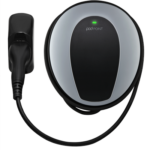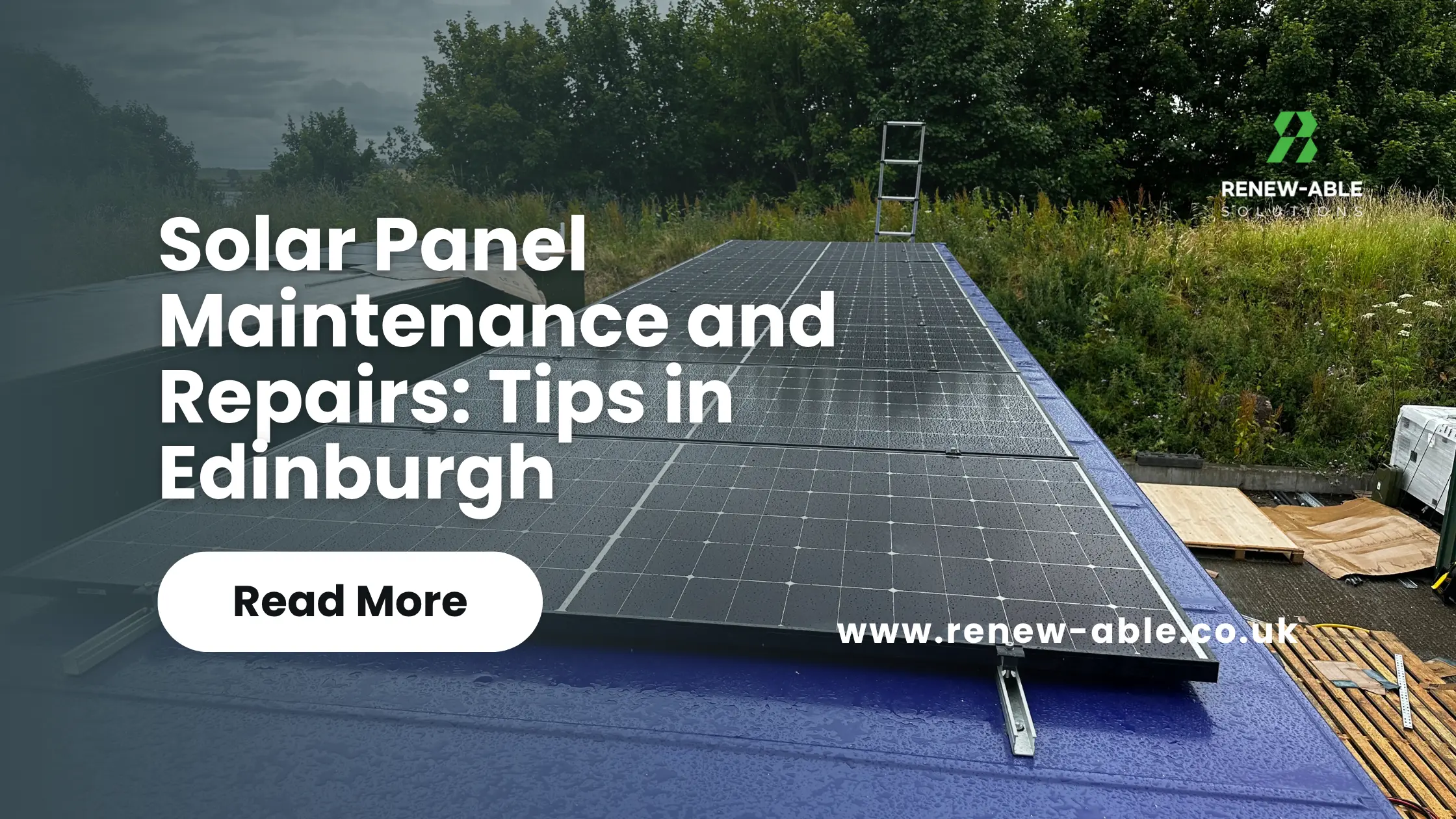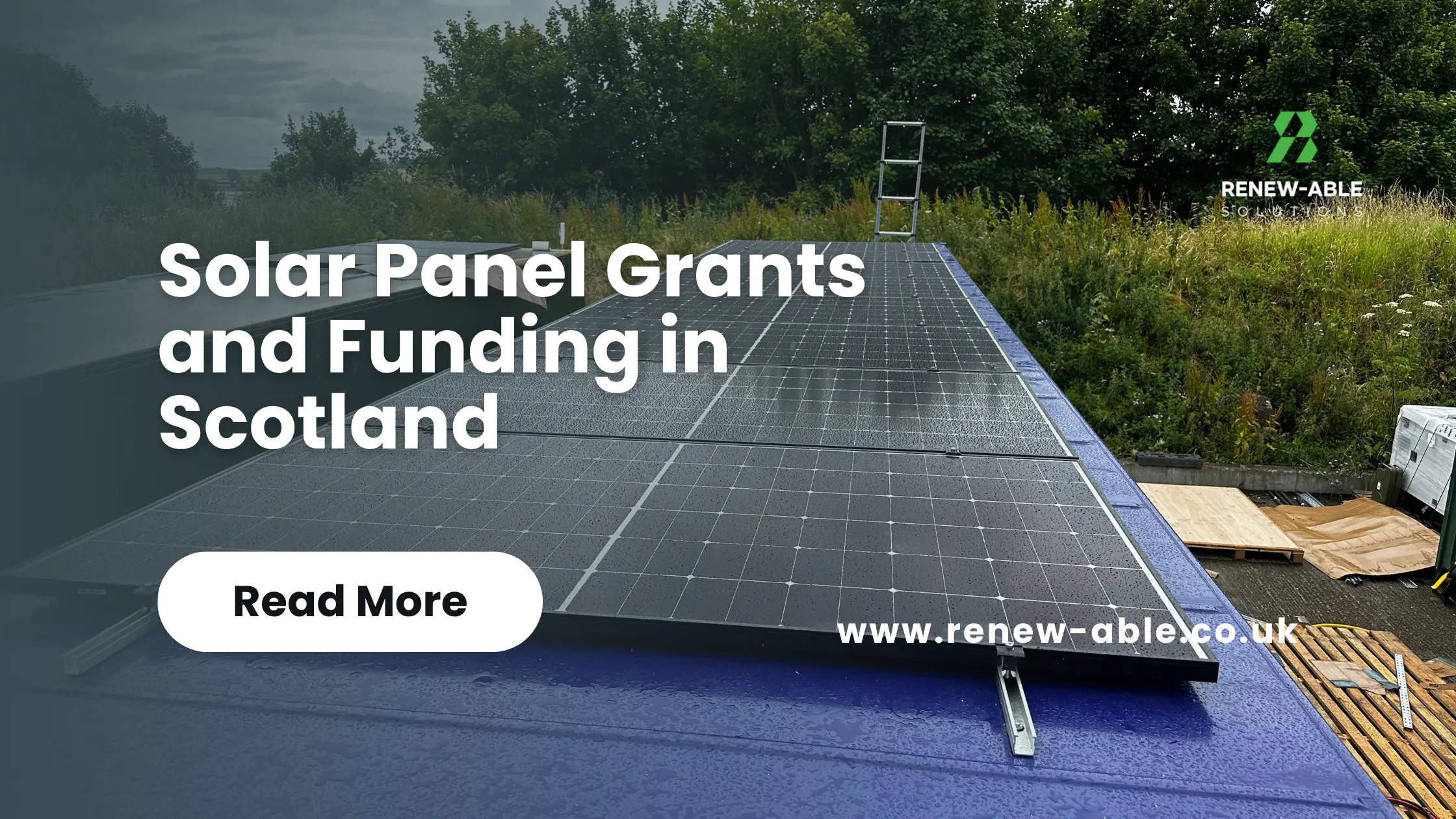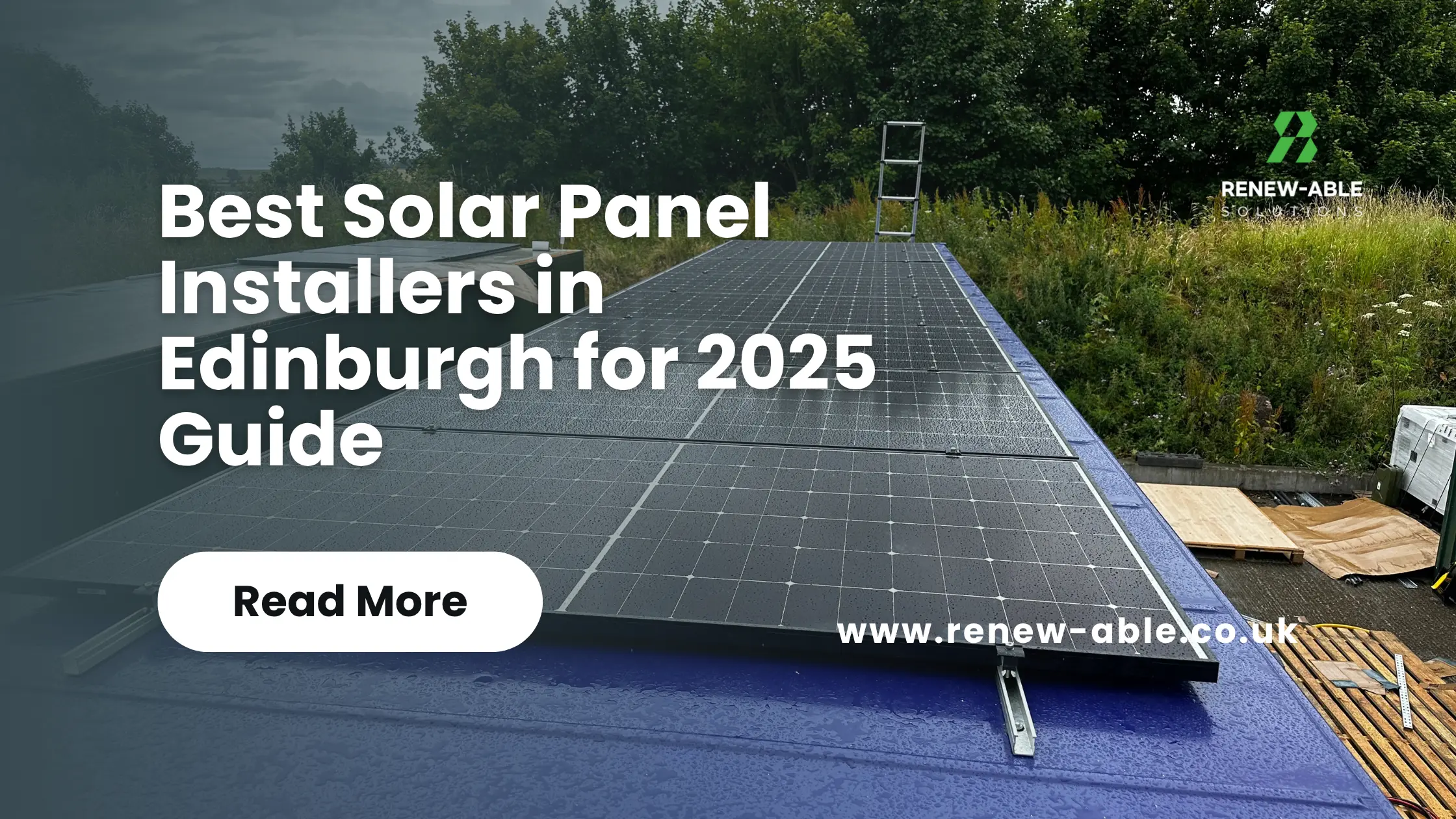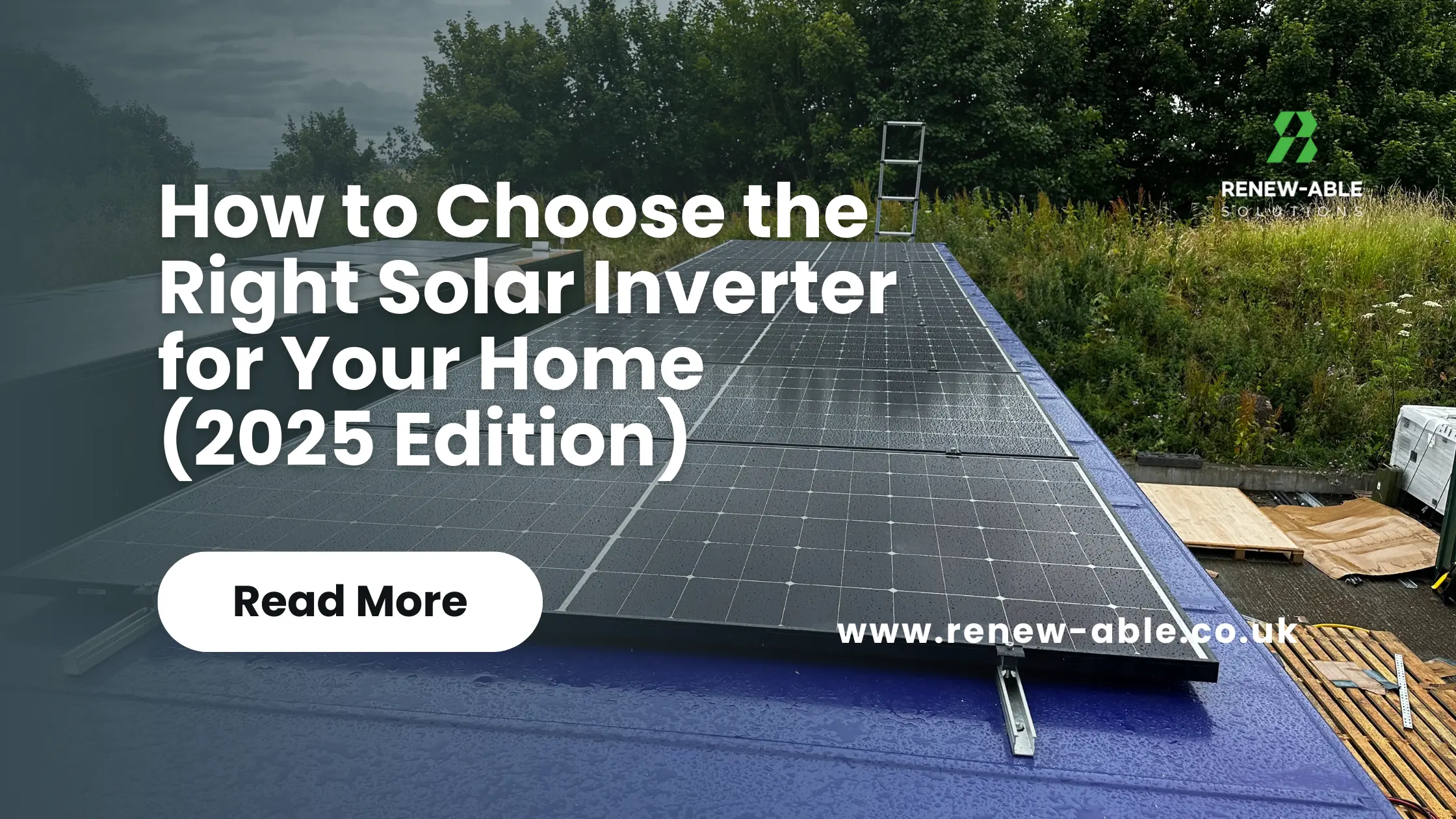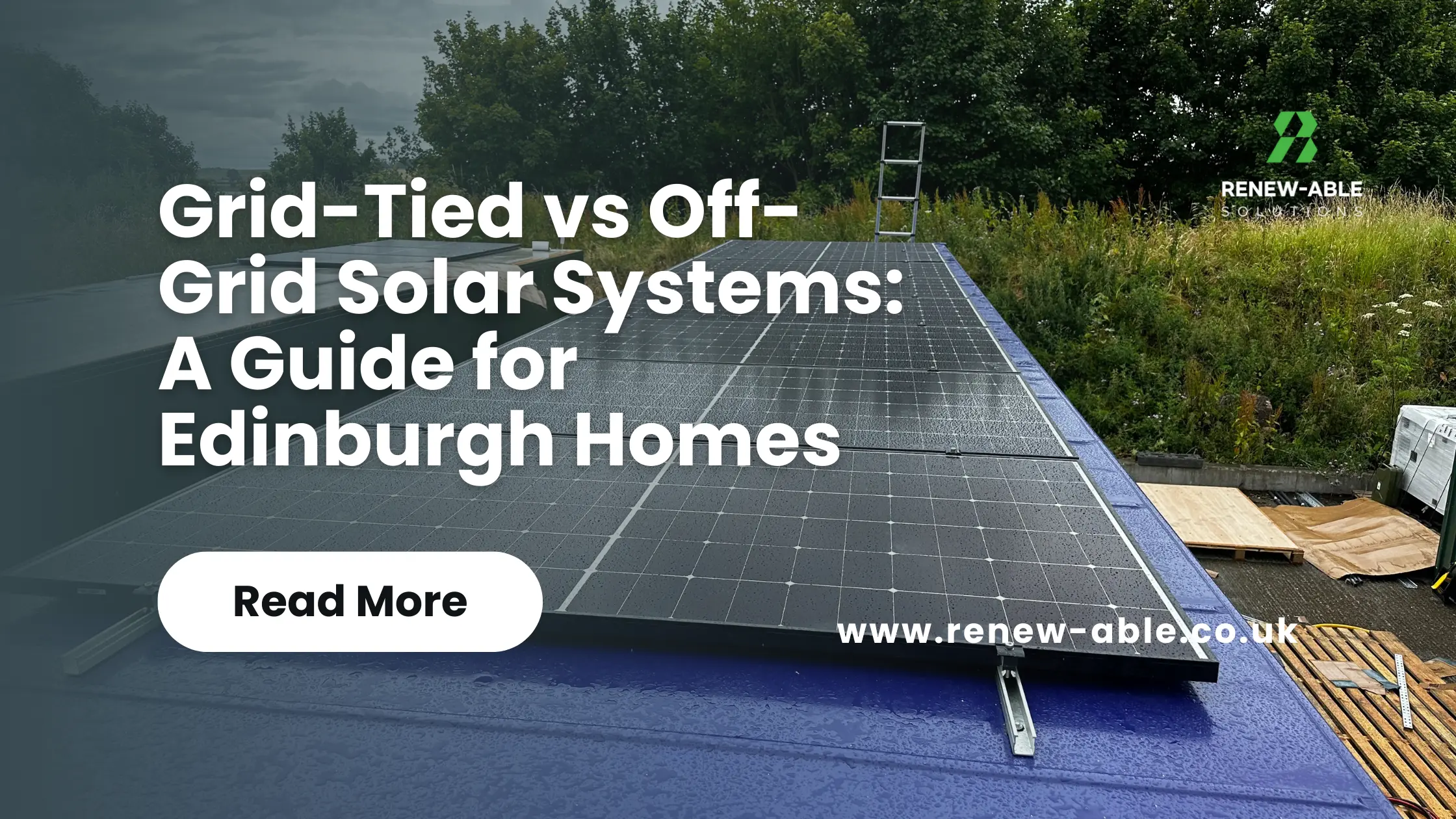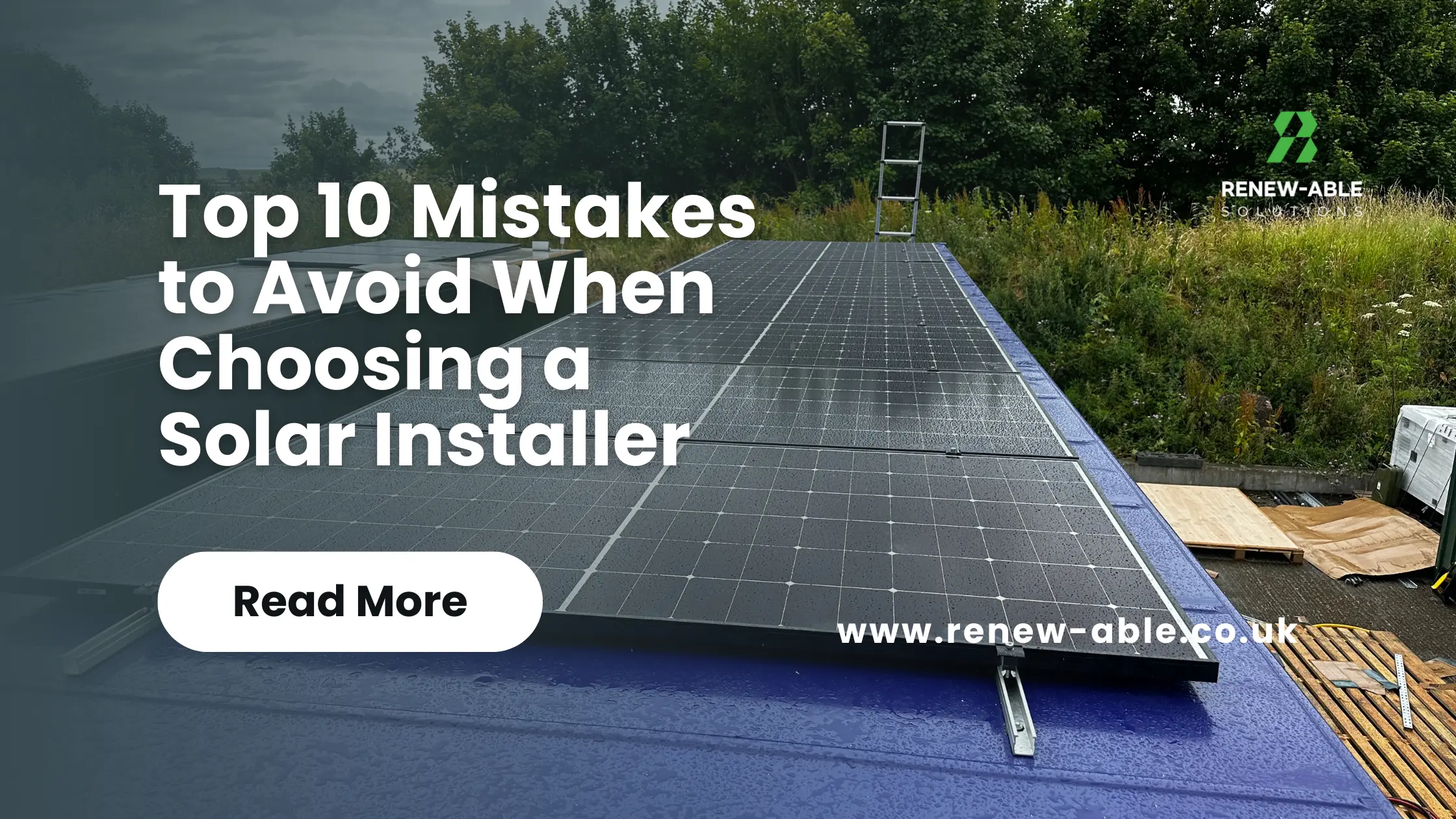PodPoint Solo 3
- Pairs with the Pod Point App.
- Remotely schedule your charging.
- Over-the-Air updates via Wi-Fi.
- Auto Power Balancing.
- Tethered model available with Type 1 – 4.8m or Type 2 – 7.5m
- Complies with Smart Charge Points Regulations 2021.
- OZEV approved.
- Price includes standard installation.
- Compatible with all plug-in vehicles.
- Fast charging for your electric carThe Solo 3 lets you charge at home faster than with a 3-pin plug.
- It comes with the choice of three power ratings: 3.6kW, 7kW or 22kW.
- Compatible with any electric vehicle, you can get up to 90 miles of range per hour charging.
- Choose a universal socket so that any car can plug in (using a separate cable) or a tethered version (where the cable is permanently attached).Please note: 22kW Solo 3s require a three-phase household electrical supply.
Protected with Auto Power BalancingKeep your electric car charging without overloading your home supply.
- Adjusts your charge so your electrical supply doesn’t get overloaded when your home is using a lot of energy.
- Charging returns to the fastest rate automatically, once more power becomes available.
- Lets you run all your home appliances as needed and makes it possible to install a second chargepoint for other vehicles.Please note: Auto Power Balancing is only available for 3.6kW and 7kW Solo 3s.
Over-the-Air updates via Wi-FiUnlock new features, get the latest software updates and receive remote support.
- Receive Over-the-Air software updates by connecting your Solo 3 to Wi-Fi
- Get new smart features that we release in future without having to buy a new charger
- Receive remote diagnostics from our support team in the unlikely event there’s an issue with your chargerGet your Solo 3 now.Charge fast, safe and smart.Order now
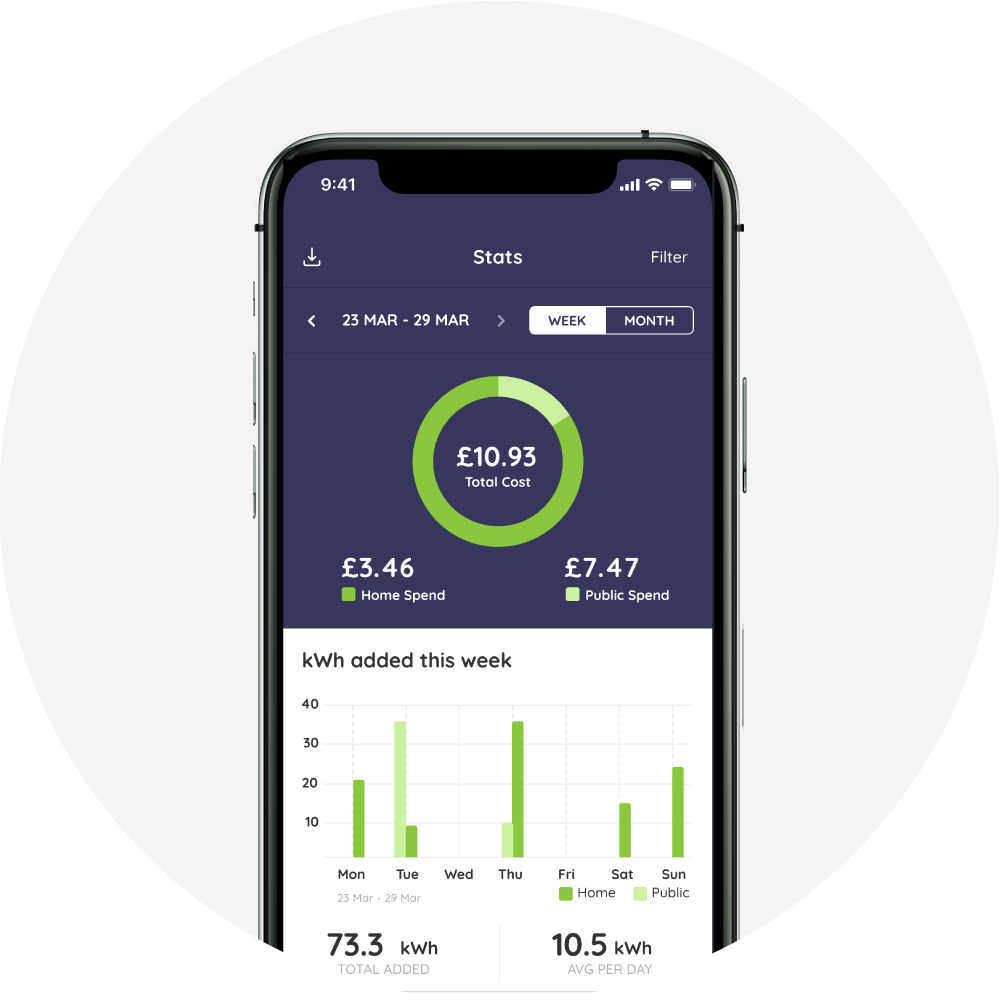 Get more with the Pod Point AppPair your Solo 3 with the Pod Point App to understand and optimise your energy usage.
Get more with the Pod Point AppPair your Solo 3 with the Pod Point App to understand and optimise your energy usage.
- Schedule your charging during off-peak hours and save up to 83% on electricity costs*.
- Gain insight into your charging activity and the associated costs from your mobile device.
- View all your home and Pod Point Network charging activity in one place.
- Download itemised charging reports to form part of your home and vehicle budgeting.Available on iOS & Android.*Figure is based on Pod Point cost estimates for charging on an average electricity tariff (28p/kWh) vs EDF’s GoElectric 35 tariff during off-peak hours (4.5p/kWh). Applies to the Solo 3.
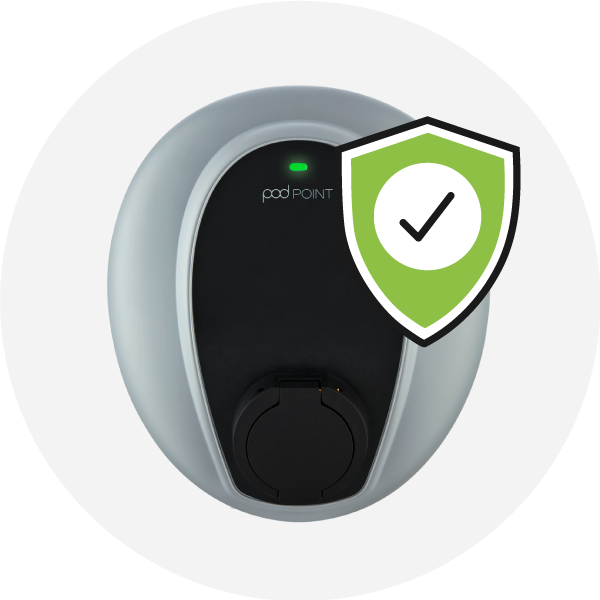
- Warranty and safety features3-year warranty as standard, safe by design.
- Your Solo 3 comes with a 3-year warranty with the option to extend to 5 years while ordering.
- Compliant with the highest international charging standards (IEC 61851, CE Certified).
- Includes over-current and fault protection, wet gun protection and double power relay.
Pod Point Solo 3 is available to buy here.
The Pod Point Solo 3 is a stylish charger that works well with schedules and offers a reliable charging experience.
It’s available untethered or tethered. Tethered models get a 4.8m Type 1 or 7.5m Type 2 cable (most people will use the Type 2 variety).
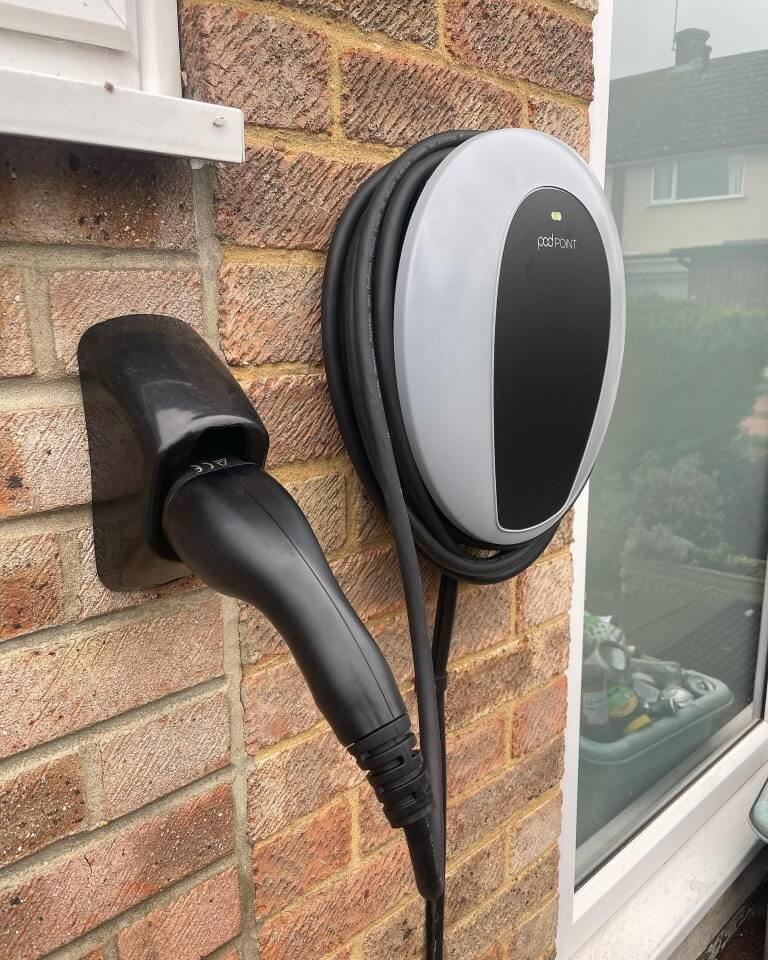
Wel ike the design, with the new polycarbonate case and oval shape being a whole lot sleeker than the original Solo’s round, ABS body. Also, the large body serves as a natural reel for the cable to loop around, creating a tidy installation.
A few more colour options would be nice – the grey is crying out to be black or white for those Stormtrooper vibes.
I also like the app, which is logical and easy to use, although some people have connectivity problems (I had no such problems). The app lets you schedule charging to make use of cheap rates and you can also input your tariff details for cost tracking.
A notable missing feature is a boost/power mode to override schedules, which is annoying if you want a quick boost (the solution is to deactivate the schedule that covers the period of inactivity you want to charge in).
A screen on the charger would have been handy to check the charge level. Pod Point has instead stuck with a single status light for at-a-glance status information.
The tiny LED status light is beaten by the likes of the Wallbox Pulsar Plus, and even the cheaper Sync EV. Pod Point should definitely work on this.
Overall, the Solo 3 is a decent smart charger in terms of design, build quality and scheduled charging. Add a power/boost button and it’s a winner.
Is the Pod Point Solo 3 easy to install?
The Solo 3 has in-built earthing so there is no requirement for an earth rod. It has a Protective Multiple Earth (PME) system, so if a fault is detected, the charge cycle is denied and it becomes a double-insulated device that isolates the vehicle from supply and earth.

Additionally, the Solo 3 has 6mA DC vehicle fault protection and only Type A RCD/RCBOs are required at the source.
The unit is designed to accept cable entry on either the left, right, bottom or via rear, with a rear installation providing a seamless installation.
The Solo 3 also has DIP switches for setting the maximum supply limit. These make it easy to set the maximum supply.

The Solo 3’s large body translates to plenty of room in the case to wire things up. It has a new circuit board and wiring configuration over the Solo, which provides more space in the case than the previous model.
Installation follows the same process as other chargers:
- Install the back plate
- Run the cable
- Create a circuit
- Wire it up
- Install the front casing
- Connect
- Test the unit
Of course, this is a simplified workflow. Electricians do a lot more work in-between, especially when it comes to assuring safety and testing. As always, you should never install an EV charger yourself, unless you are a qualified electrician.
Overall, the Solo 3 is easier to install than most other chargers because it has lots of space in the case. The build quality is excellent from an installation perspective, inspiring confidence at every stage of the installation.
Solo 3 design
The Solo 3 has a polycarbonate case, an upgrade over the previous model’s ABS case. PC is more durable than ABS with greater impact resistance. The unit is rock solid with no creaking or movement in the case.
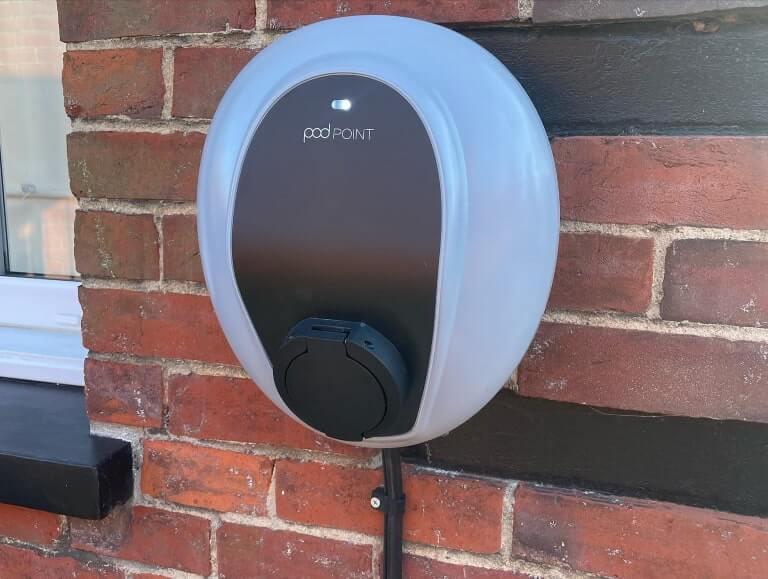
The oval shape is new, and overall it is sleeker than the Solo’s rounded shape. It doesn’t look as big and this is backed up by the measurements:
- Solo untethered: 360 x 360 x 150 mm
- Solo 3 untethered: 290 x 330 x 167 mm
The untethered unit is slightly larger than the tethered unit to accommodate the socket.
The total volume reduction over the Solo is 17.6%, so it takes up less space on the wall, although it does stick out a bit more.
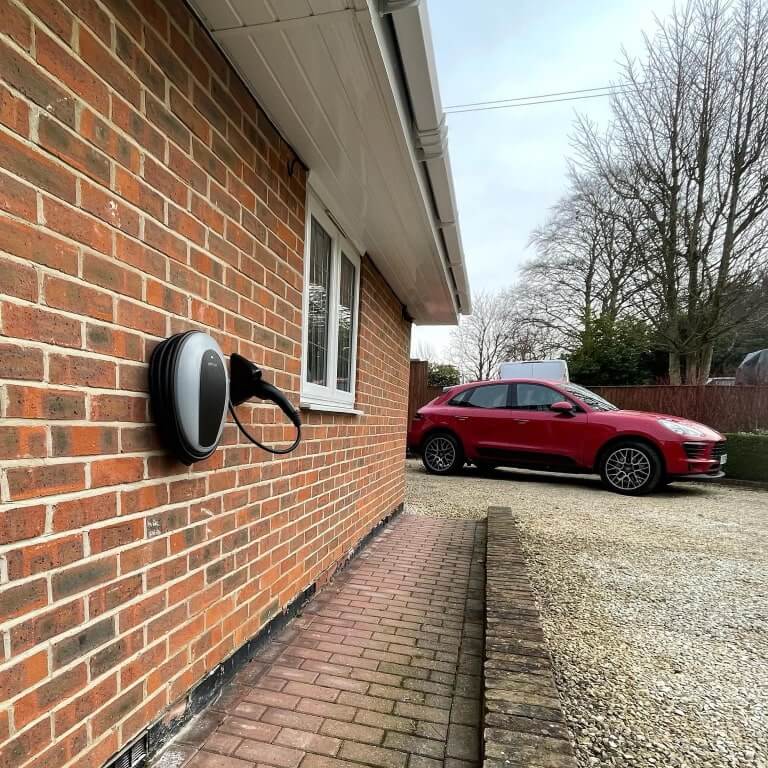
If you want the tethered model, the tethered Solo 3 is only 112mm thick, so it is significantly thinner than the untethered version. This is because it doesn’t have a built-in charge port, which requires a fatter case.
Thanks to its oval body, the cable loops around the unit, so there is no need for a wall hook like some smaller chargers. A charger holster comes as standard with the tethered model.
The PodPoint Solo 3 retains the same silver and black colour scheme as the Solo, which gives the charger a bit of kerb appeal.

It’s a more modern-looking unit, and it looks quite nice.
The front of the charger hosts a single LED bulb which is used to display the charger’s status (more on this below). It’s basic, not very big and nowhere near as nice as the light strip on the Hypervolt Home 2.0.
Overall, the Pod Solo 3 is well-made and looks good, with the tethered version my preference because it’s a lot slimmer than the untethered unit.
Solo 3 status lights
The PodPoint Solo 3 has a small LED status light that pales in comparison to the LED status ring on the Hypervolt Home 2.0 and Sync EV.
It’s a shame Pod Point didn’t upgrade it to an LED strip or something fancier because the front of the device has plenty of space for it.
The status lights are as follows:
- Solid green – charging
- Flashing green – battery is full or charger is waiting to start
- Solid blue – standby mode
- Flashing blue/pink – syncing with Pod Point
- Solid white – lost Wi-Fi connection
- Solid yellow – charging is paused and the charger is balancing current
- Flashing yellow – schedule available and waiting to charge
- Solid/flashing red – technical fault
PodPoint Solo 3 charging speeds
The PodPoint Solo 3 charges at 7kW on a 32A single-phase supply, 3.6kW on a 16A supply, and 22kW on a 3-phase supply.
Here’s what those charge speeds mean:
- 3.6kW – 14 miles of range per hour
- 7kW – 24 miles of range per hour
- 22kW – 60 miles of range per hour
Most homeowners will charge at 7kW. 7kW is fast enough for overnight charging and the Solo 3 monitors energy use via a CT clamp.
PodPoint Solo 3 connectivity
The PodPoint Solo 3 connects to your home Wi-Fi and requires a stable connection for the smart features to work. Otherwise, the charger is a plug and play device, which you activate via your vehicle or vehicle companion app.
The installer connects the Solo 3 to Wi-Fi during installation, leaving the user to download the app and create a Pod Point account.
You need a Pod Point account to link the Solo 3 to your smartphone so you can access smart features like charge scheduling.
You don’t need an account to simply charge your EV, because the charger works as a plug and play device without schedules.
To link the charger to your Pod Point account, you enter your Solo’s PSL number located on the sticker at the bottom of the charger.
The connection process is simple, but if you don’t purchase the charger via Pod-Point.com, you need to contact Pod Point support so they can create an account on their end. This is because the email address you use to buy the Solo 3 on Pod-Point.com is linked to the charger.
It has IEEE 802.11bgn Wi-Fi, which offers a good range signal and isn’t easily obstructed. In practice, it means you shouldn’t have connectivity problems, but there are several reviews on the App Store that complain about issues.
We didn’t have any connectivity problems with the Solo 3, but some users report them. If you have issues, the tips below might help.
You need to enable 2.4Ghz on your Wi-Fi router. Sometimes, Wi-Fi routers block the connection of devices. If you have any problems, restart the charger, and if this doesn’t help, restart your router.
You might also benefit from a Wi-Fi enhancer to expand the signal of your home Wi-Fi. A Wi-Fi enhancer simply plugs into a 3-pin socket.
PodPoint Solo 3 charging experience
The PodPoint Solo 3 is a smart charger, so it lets you create schedules that make charging available between different dates and times. The idea is that you schedule charging sessions to fit your lifestyle and to access cheap rates on an EV tariff.

